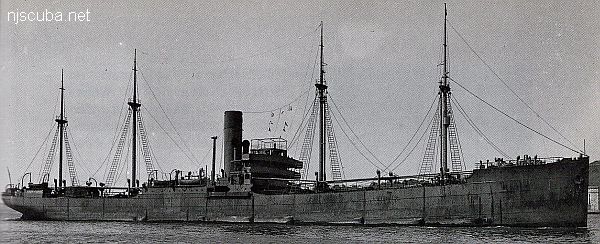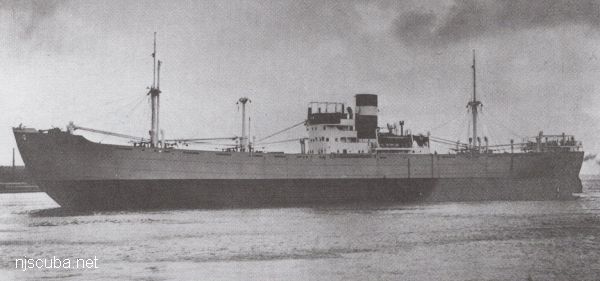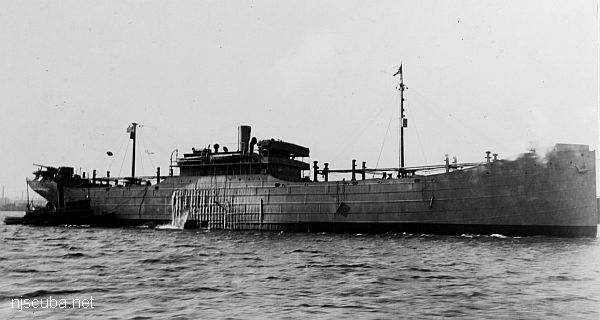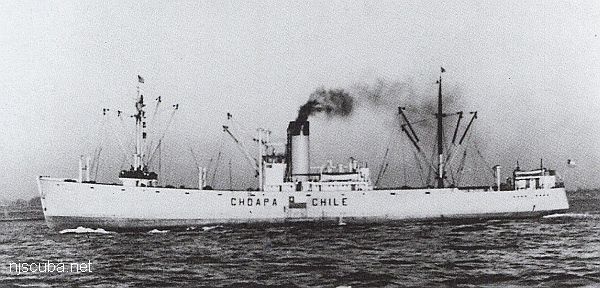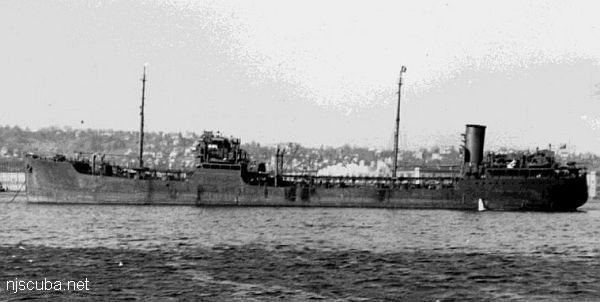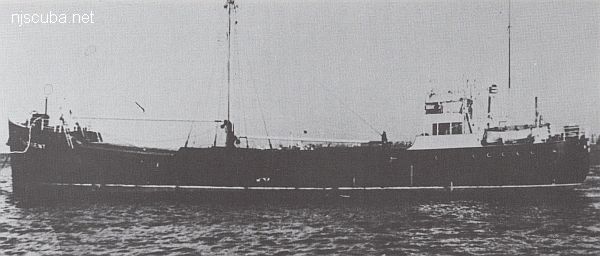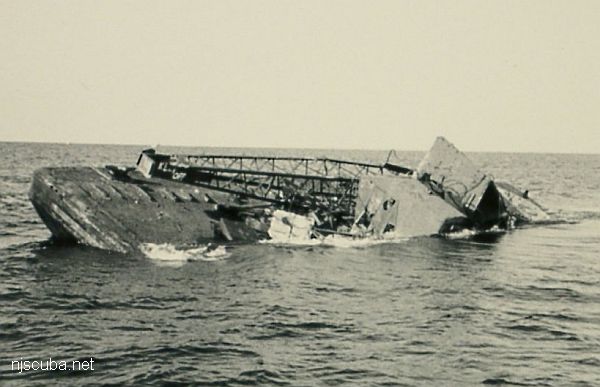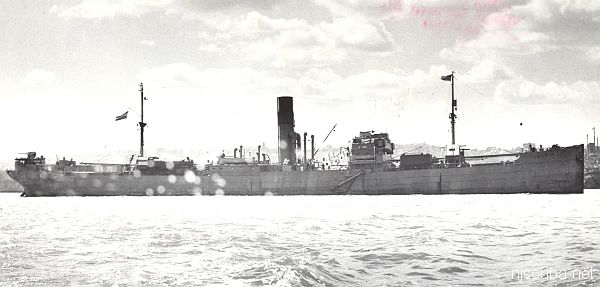
Note the locomotives on deck, foreward of the aft mast.
- Type:
- shipwreck, freighter, Netherlands
- Built:
- 1930, New Castle England, as Petersfield
- Specs:
- ( 412 x 55 ft ) 5163 gross tons, 43 crew
- Sunk:
- Tuesday April 28, 1942
torpedoed by U-136 - 6 casualties - Depth:
- 140 ft max; 110 ft min; 125 ft typical
More: Arundo ...

